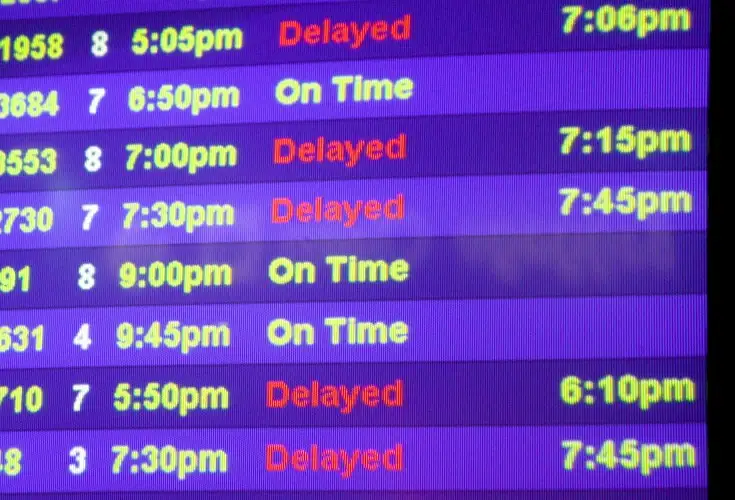
The Department of Transportation (DOT) recently announced a series of proposed consumer rights initiatives designed to make flying a little less frustrating for you and me. But since these are only proposals, the public has 60 days to comment on the DOT’s ideas. I’ll be doing a series of in-depth breakdowns of these proposals, and I encourage all SmarterTravel readers to head over to regulationroom.org and share your thoughts on the DOT’s plans. The DOT is trying to help you, so let’s make sure its solutions actually work for real, live travelers.
Tarmac delays are old news, right? Maybe, but the DOT has some new ideas that should solidify its current rules for tarmac delays.
The Basics: The DOT’s tarmac delays rules, which require aircraft to deplane passengers before tarmac delays reach three hours and impose severe fines of up to $27,500 per passenger when delays exceed that maximum, went into effect in April. The DOT’s latest proposals expand the rules to include international carriers and smaller airports, and require airlines to draft contingency plans and post them on their websites.
The Problem: Tarmac delays have been dissected ad nauseum since December, when the DOT announced its new rules and penalties, and have been on the public’s mind ever since JetBlue’s 14-hour debacle at JFK in 2007. Tarmac delays are relatively uncommon but extremely inconvenient and unpleasant for the passengers involved. Tarmac delays are usually the result of bad weather, which often forces aircraft to divert to airports where the airline has no ground operations and where there may not be gates available for deplaning passengers. Chaos ensues as flight crew, airport staff, and airport security try to figure out what to do.
It cannot be understated, however, just how rarely tarmac delays occur. A fraction of a percent of all flights experience tarmac delays longer than three hours.
In a way, the problem of tarmac delays was complicated by the DOT’s rules, which are designed to prevent them, or at least levy brutal fines against airlines when they happen. The collective airline industry response to the DOT’s rules can be summed up as: “Well, we’ll just cancel flights if a tarmac delay appears imminent.” So far the tarmac delay rules haven’t caused crippling, widespread cancellations, but the threat remains. Airlines simply will not get themselves into a situation where they’re coughing up $27,500 per individual.
The Details: When it announced the new rules, the DOT encouraged airlines to create a contingency plan for tarmac delays and add it to their contracts of carriage. By and large, that didn’t happen, so the DOT’s proposal would require airlines to do it. The contract of carriage, of course, is the legally binding agreement passengers and airlines effectively sign when a ticket is purchased. The DOT also proposes that, “Airlines would have to coordinate their tarmac delay contingency plans in advance with all airports they use, as well as with TSA and US Customs & Border Protection (CBP). This advance coordination should make it less likely that safety, security, or airport operation concerns would extend the 3-hour limit.”
The DOT would extend the rules to include small- and non-hub airports, basically any airport that serves more than 10,000 passengers per year.
The DOT would extend all facets of its tarmac delay rules to international carriers by requiring them to have a pre-announced limit on tarmac delays, though it is not currently proposing a federal limit. International carriers would, however, have the same requirements for passenger treatment, contingency plans, and coordination with airports.
The DOT would also require airlines to update delayed passengers every 30 minutes with the status and cause.
Pros and Cons to the Solution: These are mostly common sense proposals, assuming you think tarmac delays require federal rules. The DOT probably should have required contingency plans in the first place, rather than merely suggesting them, so it’s good to see the agency come around. One red flag is that these contingency plans—aside from limiting tarmac delays to three hours and assuring passengers of food, water, and functioning bathrooms, all of which is mandated by the DOT—seem rather open-ended. Will the DOT be involved in drafting these plans, to ensure a uniform experience from carrier to carrier? Will carriers be allowed to say, “All flights delayed two hours will be cancelled?” The DOT’s rules don’t leave the airlines much leeway, but there is some.
Extending coverage to smaller airports and international carriers makes sense, though I don’t see the point in excluding foreign airlines from the three-hour limit. Passengers will be taken care of, at least.
Your Turn: I’d love to hear what you think about this problem and the DOT’s solutions for it, so leave a comment below and share your thoughts. More importantly, though, tell the DOT what you think at regulationroom.org. Thanks!
We hand-pick everything we recommend and select items through testing and reviews. Some products are sent to us free of charge with no incentive to offer a favorable review. We offer our unbiased opinions and do not accept compensation to review products. All items are in stock and prices are accurate at the time of publication. If you buy something through our links, we may earn a commission.
Related
Top Fares From
Today's Top Travel Deals
Brought to you by ShermansTravel
Kenya: 14-Night Tour, Incl. Tanzania &...
smarTours
 vacation
$7125+
vacation
$7125+
7-Night Bermuda Cruise From Round-Trip Cruise...
Norwegian Cruise Line
 cruise
$1036+
cruise
$1036+
Ohio: Daily Car Rentals from Cincinnati
85OFF.com
 Car Rental
$19+
Car Rental
$19+



